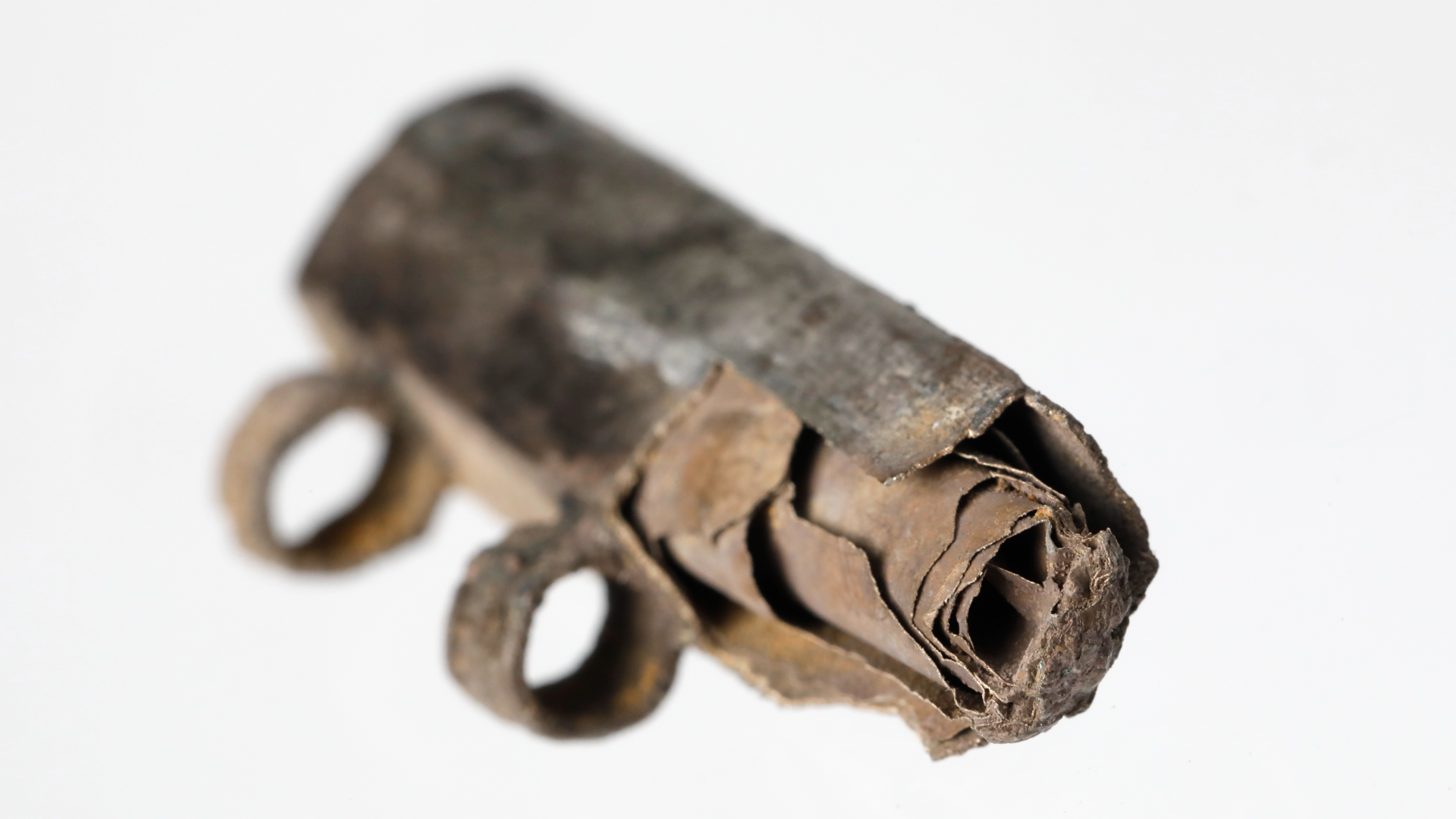It looked like this...

1,800-year-old silver amulet could rewrite history of Christianity in the early Roman Empire
By Kristina Killgrove last updated December 20, 2024
A silver amulet found next to a skeleton in a 1,800-year-old grave in Germany speaks to the importance — and the risk — of being Christian in Roman times.

Archaeologists discovered a silver amulet with a wafer-thin rolled up inscription in Frankfurt (Image credit: Archaeological Museum Frankfurt)
A 1,800-year-old silver amulet discovered beneath the chin of a skeleton in a cemetery in Germany is the oldest evidence of Christianity north of the Alps, according to a new study.
Researchers made the discovery by digitally unrolling a tiny scroll inside the amulet using CT scanning technology; this revealed an unusual Latin inscription. The finding may upend historians' understanding of how Christianity was practiced in the early Roman Empire.
Measuring just 1.4 inches (3.5 centimeters) long, the amulet contains a wafer-thin sheet of silver foil that's rolled up tightly. Archaeologists discovered it in the grave of a man who died between A.D. 230 and 270. The man likely wore the amulet on a cord around his neck, as it was found just below his jaw.
Magical amulet warded off evil
The purpose of these amulets, also known as phylacteries, "was to protect or heal their owners from a range of misfortunes, such as illnesses, bodily aches, infertility, or even demonic forces," Tine Rassalle, an independent biblical archaeologist who was not involved in the study, told Live Science in an email. "In an era without advanced medical knowledge, such items were vital sources of comfort and security for you and your loved ones."
The location of the artifact's discovery is rare, she added.
"These amulets were widely used in Late Antiquity, especially in the eastern Mediterranean world," Rassalle said, but "they are much rarer in the western Roman world. The discovery of this amulet in Germany suggests that Christian ideas had already begun to penetrate areas far from Christianity's early centers of growth." |






